2024 |
||
| 5. | 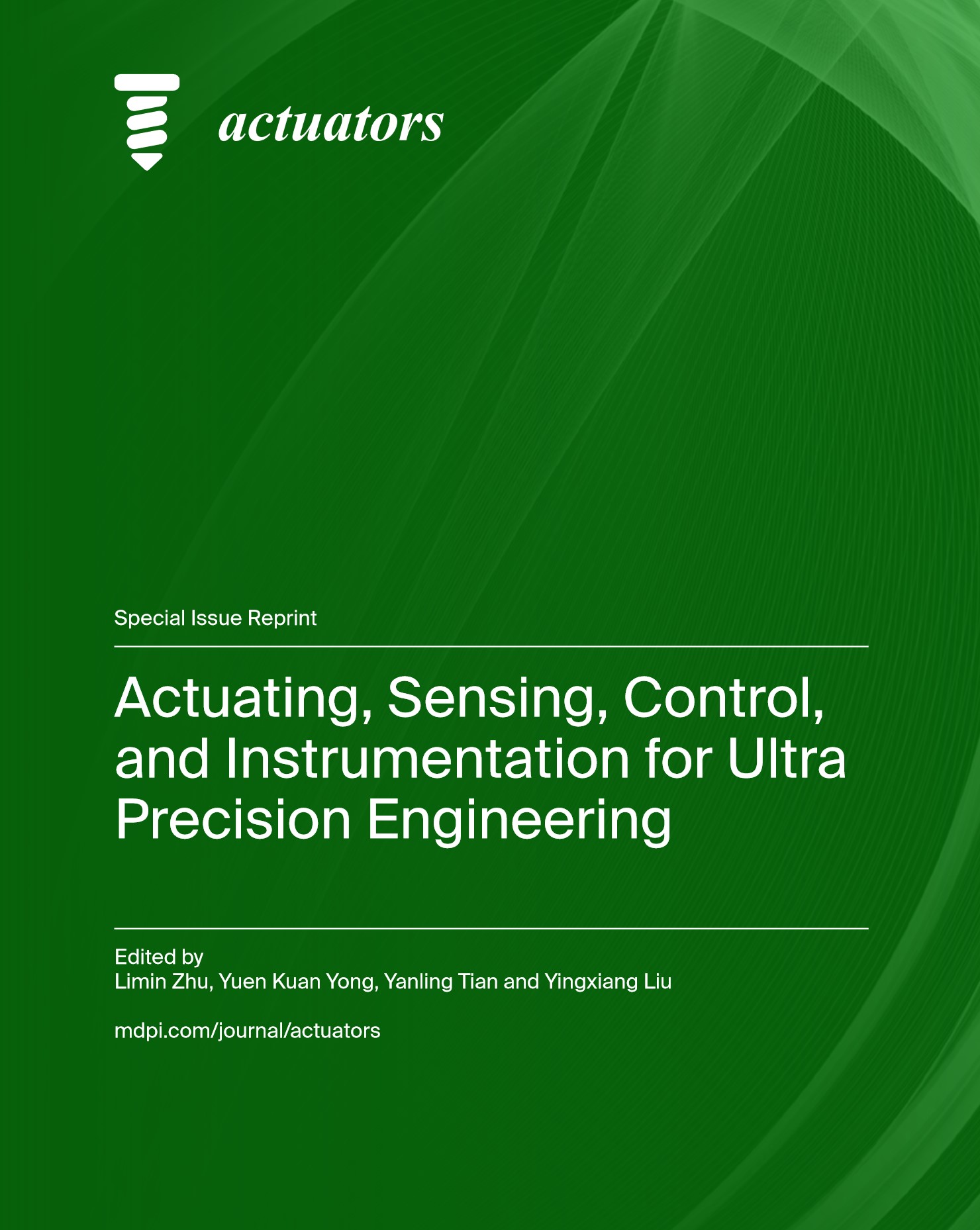 | LiMin Zhu; Y. K. Yong; Y. Tian; Y. Liu (Ed.) Actuating, Sensing, Control, and Instrumentation for Ultra Precision Engineering Book 2024, ISBN: 978-3-0365-9526-9. Abstract | Links | BibTeX | Tags: Actuator, Nanopositioning, piezoelectric @book{Zhu2024,Ultra-Precision Engineering (UPE) is a comprehensive field that concerns the design, manufacture and measurement of ultra-precision components and systems. With the progress of new solutions to UPE, the demand of advanced mechatronic systems with high-performance on freedom, stroke, resolution, accuracy and bandwidth has been continuously increasing. This Special Issue is a collection of 13 excellent research papers published in Actuators, showcasing and discussing new advances in actuators and mechatronic systems for UPE as well as ultra-precision machines. |
2022 |
||
| 4. | 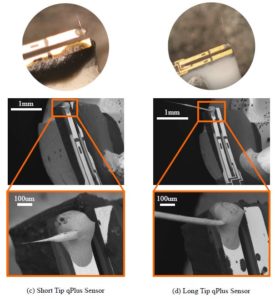 | M. G. Ruppert; D. Martin-Jimenez; Y. K. Yong; A. Ihle; A. Schirmeisen; A. J. Fleming; D. Ebeling Experimental Analysis of Tip Vibrations at Higher Eigenmodes of QPlus Sensors for Atomic Force Microscopy Journal Article In: Nanotechnology, vol. 33, iss. 18, pp. 185503, 2022, ISSN: 1361-6528, (This work was supported in part by the Australian Research Council Discovery Project DP170101813). Abstract | Links | BibTeX | Tags: Actuator, AFM, Cantilever, DP170101813, Multifrequency AFM, piezoelectric @article{Ruppert2022,QPlus sensors are non-contact atomic force microscope probes constructed from a quartz tuning fork and a tungsten wire with an electrochemically etched tip. These probes are self-sensing and offer an atomic-scale spatial resolution. Therefore, qPlus sensors are routinely used to visualize the chemical structure of adsorbed organic molecules via the so-called bond imaging technique. This is achieved by functionalizing the AFM tip with a single CO molecule and exciting the sensor at the first vertical cantilever resonance mode. Recent work using higher-order resonance modes has also resolved the chemical structure of single organic molecules. However, in these experiments, the image contrast can differ significantly from the conventional bond imaging contrast, which was suspected to be caused by unknown vibrations of the tip. This work investigates the source of these artefacts by using a combination of mechanical simulation and laser vibrometry to characterize a range of sensors with different tip wire geometries. The results show that increased tip mass and length cause increased torsional rotation of the tuning fork beam due to the off-center mounting of the tip wire, and increased flexural vibration of the tip. These undesirable motions cause lateral deflection of the probe tip as it approaches the sample, which is rationalized to be the cause of the different image contrast. The results also provide a guide for future probe development to reduce these issues. |
| 3. | 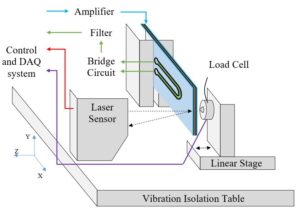 | R. Seethaler; S. Z. Mansour; M. G. Ruppert; A. J. Fleming Piezoelectric Benders with Strain Sensing Electrodes: Sensor Design for Position Control and Force Estimation Journal Article In: Sensors and Actuators A: Physical, vol. 335, pp. 113384, 2022, ISSN: 0924-4247. Abstract | Links | BibTeX | Tags: Actuator, piezoelectric @article{Fleming2022,Piezoelectric benders are widely used in industrial applications due to their low-cost and compact size. However, due to the large relative size and cost of displacement sensors, bender actuators are often operated in open-loop or with feed-forward control, which can limit positioning accuracy to 20% of full-scale. To improve the positioning accuracy of piezoelectric benders, this article proposes integrating resistive strain gauges into the electrode surface by chemical etching or laser ablation. These strain sensors are then used to measure and control the tip displacement. The proposed sensors are shown to suffer from significant cross-coupling between the actuator voltage and measured signal; however, this can be mitigated by judicious choice of the sensor location and actuator driving scheme. In addition to position sensing, a method is also presented for simultaneous estimation of the contact force between the actuator tip and load. The proposed methods are validated experimentally by controlling the tip position of a piezoelectric bender while simultaneously estimating the force applied to a reference load cell. |
2021 |
||
| 2. | 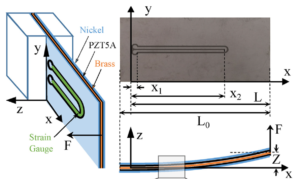 | R. Seethaler; S. Z. Mansour; M. G. Ruppert; A. J. Fleming Position and force sensing using strain gauges integrated into piezoelectric bender electrodes Journal Article In: Sensors and Actuators A: Physical, vol. 321, pp. 112416, 2021, ISBN: 0924-4247. Abstract | Links | BibTeX | Tags: Actuator, Nanopositioning, piezoelectric @article{J21e,This article derives design guidelines for integrating strain gauges into the electrodes of piezoelectric bending actuators. The proposed sensor can estimate the actuator tip displacement in response to an applied voltage and an external applied tip force. The actuator load force is also estimated with an accuracy of 8% full scale by approximating the actuator response with a linear model. The applications of this work include micro-grippers and pneumatic valves, which both require the measurement of deflection and load force. At present, this is achieved by external sensors. However, this work shows that these functions can be integrated into the actuator electrodes. |
2020 |
||
| 1. | 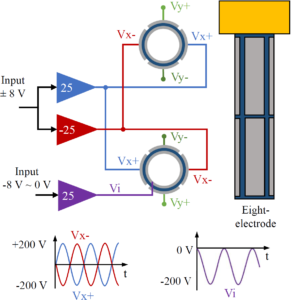 | D. S. Raghunvanshi; S. I. Moore; A. J. Fleming; Y. K. Yong Electrode Configurations for Piezoelectric Tube Actuators With Improved Scan Range and Reduced Cross-Coupling Journal Article In: IEEE/ASME Transactions on Mechatronics, vol. 25, no. 3, pp. 1479-1486, 2020, ISSN: 00346748. Abstract | Links | BibTeX | Tags: Actuator, Nanopositioning, piezoelectric, Piezoelectric Transducers and Drives @article{J20d,Piezoelectric force and position sensors provide high sensitivity but are limited at low frequencies due to their high-pass response which complicates the direct application of integral control. To overcome this issue, an additional sensor or low-frequency correction method is typically employed. However, these approaches introduce an additional first-order response that must be higher than the high-pass response of the piezo and interface electronics. This article describes a simplified method for low-frequency correction that uses the piezoelectric sensor as an electrical component in a filter circuit. The resulting response is first-order, rather than second-order, with a cut-off frequency equal to that of a buffer circuit with the same input resistance. The proposed method is demonstrated to allow simultaneous damping and tracking control of a high-speed vertical nanopositioning stage. |
2024 |
||
| 5. |  | Actuating, Sensing, Control, and Instrumentation for Ultra Precision Engineering Book 2024, ISBN: 978-3-0365-9526-9. |
2022 |
||
| 4. |  | Experimental Analysis of Tip Vibrations at Higher Eigenmodes of QPlus Sensors for Atomic Force Microscopy Journal Article In: Nanotechnology, vol. 33, iss. 18, pp. 185503, 2022, ISSN: 1361-6528, (This work was supported in part by the Australian Research Council Discovery Project DP170101813). |
| 3. |  | Piezoelectric Benders with Strain Sensing Electrodes: Sensor Design for Position Control and Force Estimation Journal Article In: Sensors and Actuators A: Physical, vol. 335, pp. 113384, 2022, ISSN: 0924-4247. |
2021 |
||
| 2. |  | Position and force sensing using strain gauges integrated into piezoelectric bender electrodes Journal Article In: Sensors and Actuators A: Physical, vol. 321, pp. 112416, 2021, ISBN: 0924-4247. |
2020 |
||
| 1. |  | Electrode Configurations for Piezoelectric Tube Actuators With Improved Scan Range and Reduced Cross-Coupling Journal Article In: IEEE/ASME Transactions on Mechatronics, vol. 25, no. 3, pp. 1479-1486, 2020, ISSN: 00346748. |
